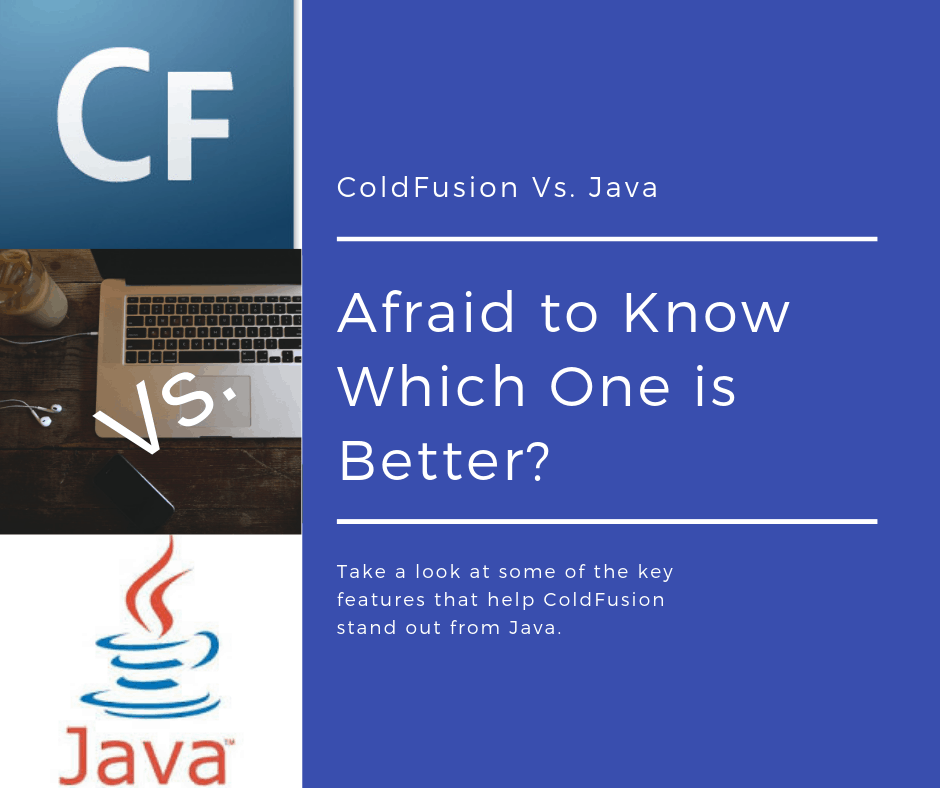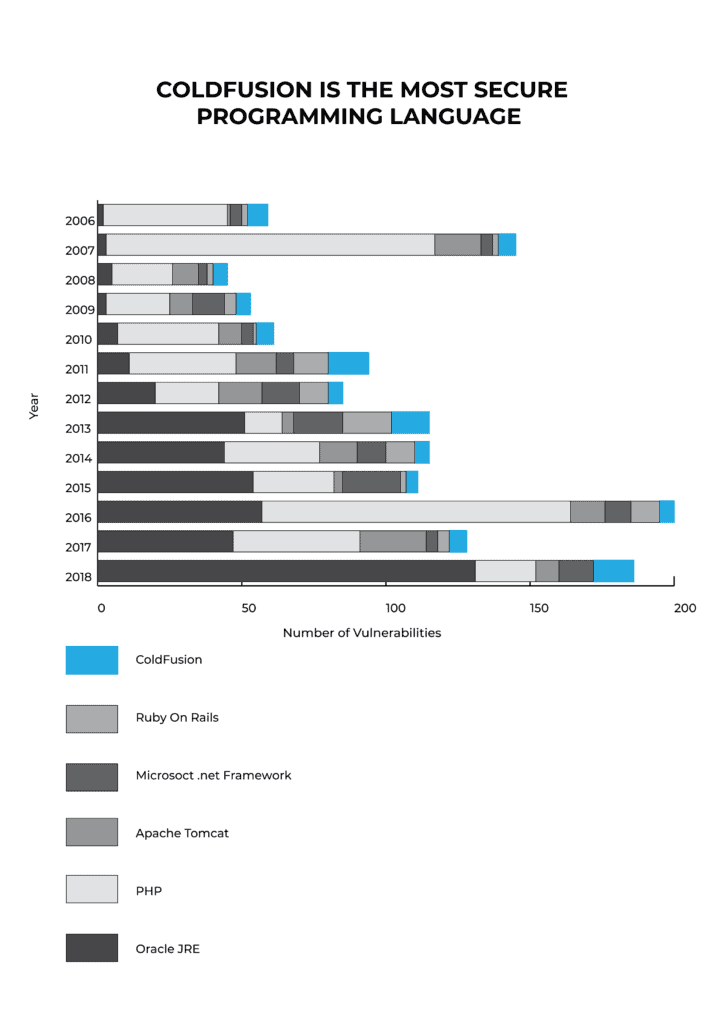
Java is one of the biggest programming languages out there. Although it’s not as prolific as before, many programmers still use Java. It is widely considered to be one of those must-learn languages.
But why Java? Why not ColdFusion?
Let’s take a look at some of the key features that help ColdFusion stand out from Java.
| ColdFusion | Java | |
RAD |
||
| When it comes to Rapid Application Development, there is no other language like ColdFusion. CF was specifically designed so that any user (new or veteran) could pick up the language and easily design an application. From the ColdFusion Builder to native ORM support, ColdFusion accomplishes its goal of making difficult things easy. | Let’s just face the facts. Coding in Java takes time. Whereas ColdFusion is a rapid development platform, Java needs the assistance of other applications to become a RAD platform. Among the most popular of these is the CUBA platform. It is an open source framework that provides some of the features that CF provides natively. | |
The speed of Development and Agility |
||
| It’s hard to get more simple and elegant than CFML code. What may require many lines of coding with other languages is reduced down to a few simple lines with ColdFusion. In turn, the less time you spend writing code, the faster you actually complete projects. Not only that but, CF is extremely adaptable to Agile coding for complex projects. | From thought to launch, there is no way that Java can compete with ColdFusion. A lot of this is contingent upon the complexity of the coding. Where CF tags or CFScript are very user friendly, Java just isn’t as nice to developers. Long strings of unnecessarily picky code can easily frustrate even the most senior of your development team. With Java, practice makes perfect. Java can also be an effective language for Agile methodology, but you must first download third party apps. This is very unlike ColdFusion with its native functions. | |
Security |
||
| ColdFusion is one the most secure development platforms out there. Plain and simple. Even when vulnerabilities do arise. they get taken care of. Adobe releases regular security updates and these can be manually or automatically installed. The dedication of the Adobe team and like-minded members of the CF community help keep security up-to-date and top notch. | You may believe that because since ColdFusion is so secure that its parent language is as well. This is not true. Java is definitely lacking in the security department. Recently though, Java has made some changes to their security with a Security Manager and Sandbox capabilities. But it seems to be too little too late. | |
User Interface |
||
| There’s nothing worse than being unable to navigate around your own platform. In accordance with our State of the CF Union 2018, most CF’ers don’t find a need to have a UI. However, the ones that do can easily create a homegrown UI with ColdFusion or use a CMS such as Mura to do so. | One of the biggest complaints about Java (besides its security) is the complete lack of a useful UI. In order to even use a GUI with Java, you must first create it yourself. This can be accomplished using one of several programs available such as Swing. Although even hardcore Java users claim that these UIs tend to take away the actual look and feel of Java. | |
As you can see, ColdFusion grew up to be an awesome language in its own respect. And Java is becoming a shadow of its former self. This is a classic example of how the mighty have fallen. But do you think this could happen with ColdFusion? Adobe has dedicated at least ten more years to ColdFusion. What are some important areas they should keep up with (or add to) in order to withstand the test of time? Let us know in the comments below! If you like what you read, go ahead and follow us on Twitter @TeraTechCF and never miss an update.
Cheers!
PS Here are some charts and CVE details for you to check out.
CVE details specify the number of critical vulnerabilities in comparison with other languages.
- http://www.cvedetails.com/vendor/74/PHP.html
- http://www.cvedetails.com/product/1526/SUN-JRE.html?vendor_id=5
- https://www.cvedetails.com/product/19117/Oracle-JRE.html?vendor_id=93
- http://www.cvedetails.com/product/887/Apache-Tomcat.html?vendor_id=45
- https://www.cvedetails.com/product/2002/Microsoft-.net-Framework.html?vendor_id=26
- https://www.cvedetails.com/product/22568/Rubyonrails-Ruby-On-Rails.html?vendor_id=12043

Originally published at www.teratech.com
You must be logged in to post a comment.








 23 Nov
23 Nov 10AM Pacific
10AM Pacific Online
Online